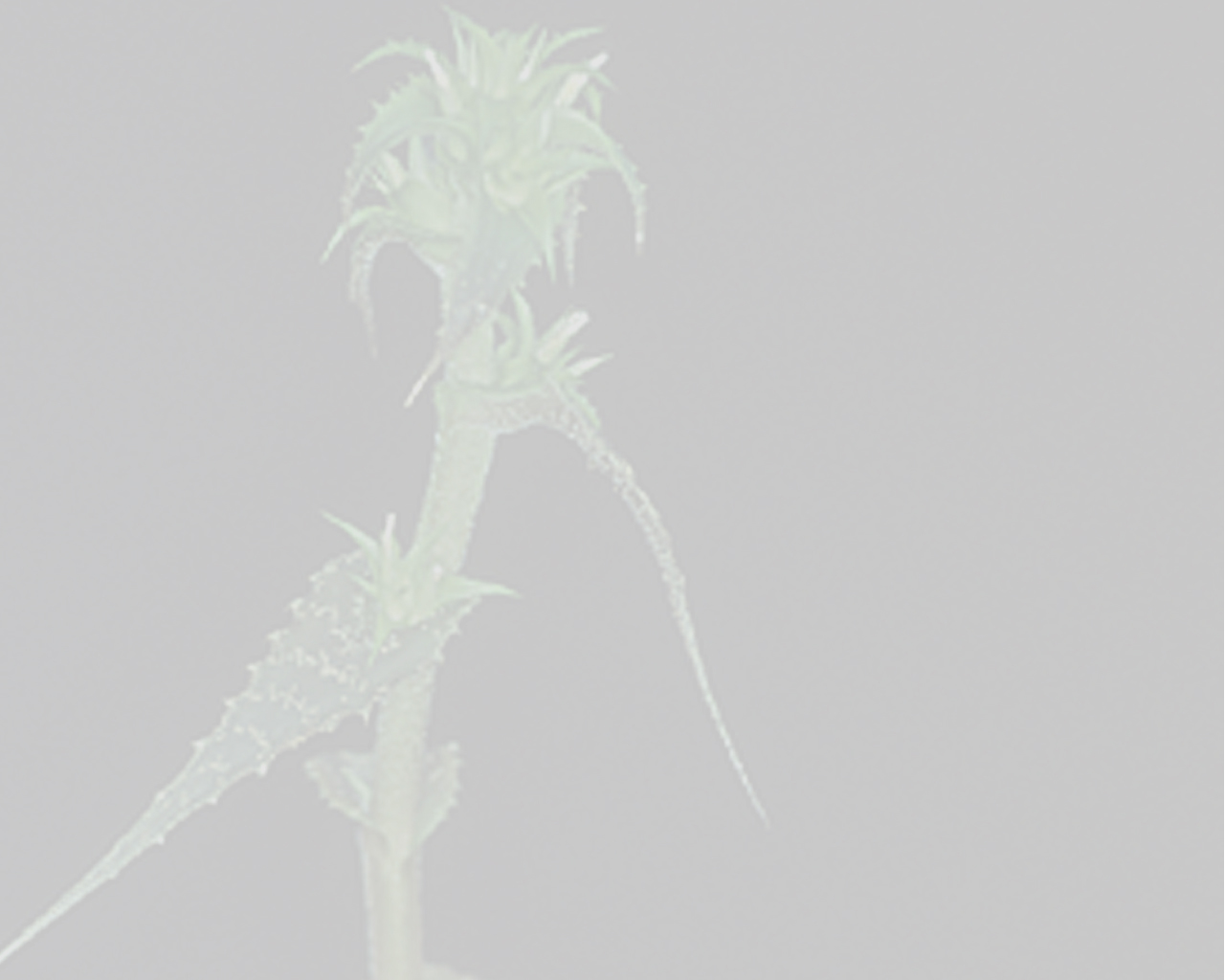
Orthophytum schulzianum Leme & M.Machado
Taxonomic Change:
Comments:
- This new species is named for Rudolf Schulz, of Teesdale, Australia, who found the plant together with the second author while studying species of Uebelmannia (Cactaceae) for a book on the genus (Schulz & Machado 2000; see page 49 for a picture of O. schulzianum).
Orthophytum schulzianum grows in the mountainous area of central Minas Gerais within the Espinhaqo Range, near the town of Diamantina around which lies the so-called Diamantina Plateau, at altitudes above 1200 m. The region has an average annual precipitation of 1300-1550 mm with an average annual temperature of 18-19°C. Summers are humid with rain falling from Spring (October) to Autumn (April). Temperatures may reach 32-35°C during the warmer months. Winters are dry and daily minimum temperatures may drop to about 5°C for a few days during the months of July and August. Heavy cloud-banks are common during the dry season. These usually form at night and remain through much of the morning, only burning off around noon. The cloud-banks provide abundant mist, and this is an important source of water for the vegetation during the dry season and a key factor for Bromeliaceae abundance.
Orthophytum schulzianum inhabits shallow cavities on sandstone outcrops filled with sand derived from the weathering of the rock, and humus derived from the decaying of the scarce vegetation. Associated plants include representatives of the Orchidaceae (Pleurothallis teres, Laelia spp.), Velloziaceae (Vellozia spp., Barbacenia spp.), Eriocaulaceae (Syngonanthus spp., Paepalanthus spp.), Cactaceae (Cipocereus minensis, Pilosocereus aurisetus, Uebelmannia pectinifera subsp. flavispina, Discocactus placentiformis) and other Bromeliaceae (Vriesia spp., Aechmea phanerophlebia, Tillandsia streptocarpa, Neoregelia bahiana, Encholirium spp., Dyckia spp.), as well as a wealth of lichen species. The cacti Uebelmannia pectinifera subsp. flavispina and Discocactus placentiformis are both listed as endangered species in CITES Appendix I (IUCN 2001).
This new species is infrequent in the habitat of its only known location, with small groups of plants widely spaced. With its silvery color and compact growth habit, Orthophytum schulzianum is an exceedingly attractive species. This, coupled with the presumed scarcity of plants in habitat, could lead to a quick demise of the species in case large scale collection of plants is conduced at its only known locality, suggesting the urgent need of further field investigation for the establishment of its conservation status. —See J. Bromeliad Soc.

